
So many diet books!!
I like to joke that Kombucha supports an unhealthy lifestyle. What I mean is that Kombucha benefits can be felt when incorporated into any diet.
When I first started making Kombucha, my family was consuming lots of processed foods, some “healthy” and some not. I believed they made my life easier, and perhaps they did in the moment.
What isn’t advertised on the package: how much nutrition you trade for a little convenience.
Over these past 8 years, we’ve dabbled with vegetarian, vegan, raw, South Beach and many other food plans. Our goal hasn’t always been to lose weight as much as to find what feels right, or figure out what feels wrong.
 It is an amazing fact: Humans are the only species on Earth that has trouble figuring out what to eat. Every other animal eats on instinct.
It is an amazing fact: Humans are the only species on Earth that has trouble figuring out what to eat. Every other animal eats on instinct.
Our relationship to food has been – I say this a lot – perverted by both well-meaning and nefarious interests in many ways:
- When it comes to the food supply, economies of scale have replaced common sense.
- Nutritionism, which fits in very conveniently with the “healthy processed foods” industry, has propagated the bogus idea that food can be broken down into its component parts and be even better for you than simply eating the whole food.
- The Lipid Hypothesis and the Diet-Heart Hypothesis, both now widely discredited, retain a pernicious hold on subconscious of the food consumer.
- The career treadmill/debt machine drains so many hours that a “lean” frozen entree and a few supplement pills may feel like the best you can do.
- FDA approved messages flood airwaves and brainwaves: can low-fat, low-carb, vitamin enriched, heart healthy potato chips really exist?
My Family’s Journey
At some point, I started making better daily food choices, in part because I was drinking Kombucha regularly, which shifted my pH and therefore my tastes.
My husband passed along Michael Pollan’s book Omnivore’s Dilemma when he was done, and I was especially fascinated by Joel Salatin’s Polyface Farms, specifically Michael’s description of the techniques used to raise pastured beef, eggs and chicken and the resulting health of the farm’s entire ecosystem.
I began paying extra at farmer’s markets for these items and could taste a difference right away, but the sticker shock of paying the real cost (as opposed to factory farm prices) took a little time to get used to. Later, I heard about raw milk and was simultaneously fascinated and frightened.
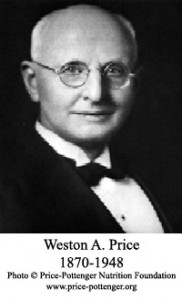 All my programming told me it had to be dangerous. I found out more about pasteurization and beneficial bacteria, which of course I knew about from Kombucha, and then eventually I became aware of this organization called the Weston A. Price Foundation (WAPF).
All my programming told me it had to be dangerous. I found out more about pasteurization and beneficial bacteria, which of course I knew about from Kombucha, and then eventually I became aware of this organization called the Weston A. Price Foundation (WAPF).
I wish I could remember who first told me about WAPF and Nourishing Traditions by Sally Fallon Morrell. It seemed like all the little pieces of information that had been bouncing around in my head fell into place.
The WAPF philosophy involves eating a traditional diet composed of “nutrient dense foods” and natural animal fats, reflective of what humans evolved to eat over millions of years.
Those confusing this with the Atkins diet make a critical mistake in omitting the WAPF insistence on pastured meat, poultry and dairy in conjunction with fresh fruit and vegetables, sprouted grains and significant portions of living fermented foods, most of which are not available at typical supermarkets.
The goal is to eliminate those elements of the Standard American Diet (SAD) which are responsible for so much illness worldwide.
Price developed his philosophy from intensive scientific studies of the diets of various populations all over the world, including and featuring many isolated native diets, and the corresponding health of the people.
While the exact components of each regional diet varied by what was available, certain elements and categories of food appeared consistently across populations, and observable positive and negative effects were catalogued meticulously.
Chris Masterjohn, a WAPF volunteer chapter leader who has written extensively about Dr. Price, summarized his findings as follows:
“Price consistently noted that the diets of groups in which tooth decay was prevalent shared certain characteristics – namely, the prominence of refined foods as staples. The diets of groups in which tooth decay was absent or nearly absent varied widely but were all characterized by the absence of refined foods. Not all native diets were equal, however: those in which animal foods were virtually absent, for example, produced much lower rates of tooth decay than found on modern, refined diets, but much higher rates of tooth decay than found on diets containing a significant amount of animal foods.
Price did not hypothesize that the foods determined the vulnerability to tooth decay. Instead, he hypothesized that the nutrients within the foods, regardless of their specific source, determined the vulnerability to tooth decay.”
His hypothesis was proven right over and over again via chemical analyses of the foods, controlled experiments with lab animals, intervention trials with patients who experienced reversal of tooth decay and studies done by others using Price’s protocols.
For My Vegetarian & Vegan Friends
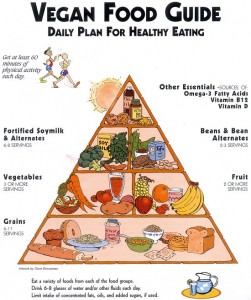 Nothing in this world is “one size fits all” and I have never claimed to know what’s right for others. I did not do well without any meat in my diet, yet even now I sometimes go days without it and feel fine.
Nothing in this world is “one size fits all” and I have never claimed to know what’s right for others. I did not do well without any meat in my diet, yet even now I sometimes go days without it and feel fine.
I have read about and heard many people talk about the health problems they experienced after following vegetarian or vegan diets for a long time. These people speak passionately and seemingly sincerely and their message can be hard to ignore.
On the other side, vegetarians and vegans argue that those who experience poor health on those diets are not eating the available foods necessary to remain healthy, which is no fault of the diet. They also point to numerous studies that show vegetarians demonstrate superior health over meat eaters in all kinds of ways, while plenty of mainstream experts that say vegan diets are just fine, even for kids, if done correctly.
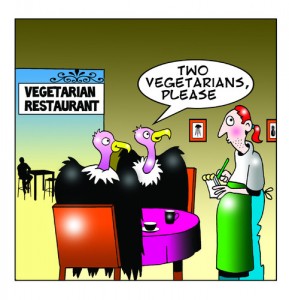 In fairness, WAPF would not endorse the diet of the meat eaters in those studies, which would include industrial meat and dairy as well as lots of processed foods. Additionally, in the “correlation doesn’t necessarily mean causation” department, those who follow a vegetarian diet are already more likely to be health conscious and consume whole foods instead of processed foods, so they would naturally exhibit better health as a group than industrial meat and processed food eaters. Additionally, it’s widely accepted that B12, Calcium, Iron and Vitamin D deficiencies are common among vegetarians and vegans.
In fairness, WAPF would not endorse the diet of the meat eaters in those studies, which would include industrial meat and dairy as well as lots of processed foods. Additionally, in the “correlation doesn’t necessarily mean causation” department, those who follow a vegetarian diet are already more likely to be health conscious and consume whole foods instead of processed foods, so they would naturally exhibit better health as a group than industrial meat and processed food eaters. Additionally, it’s widely accepted that B12, Calcium, Iron and Vitamin D deficiencies are common among vegetarians and vegans.
For what it’s worth, it is possible to follow much of the WAPF diet and remain vegetarian. Studies have shown that getting even just 5-10% of calories from animal products provides nutrition that a strict vegan diet cannot.
“In reality, the difference between a diet that is one hundred percent animal products and one that is two percent animal products is merely one of quantity, while the difference between a diet that is two percent animal products and one that is zero percent animal products is one of quality. A diet low in animal products and a diet devoid of animal products are simply two fundamentally different things.”
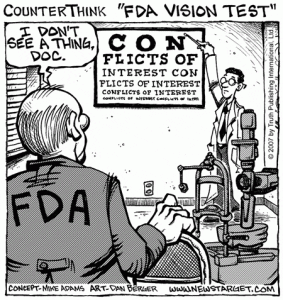 Already the debate is difficult to sort out. But WAPF & vegetarians, and yes even vegans too, have a lot in common in the battle for food freedom in this country.
Already the debate is difficult to sort out. But WAPF & vegetarians, and yes even vegans too, have a lot in common in the battle for food freedom in this country.
Many who follow all these diets would agree: community access to whole foods produced by local, organic farmers is the key to long term individual, societal and environmental health, and that access is currently under assault.
Whether the target is raw milk, herbal supplements, herd-shares, buying clubs or what have you, the raids continue to happen, and tens of thousands of dollars worth of food is wasted each time.
Those of us making conscious choices about our diet must band together to ensure we all have access to the foods we want and need to live.
How My Family Eats Today
Thankfully, the microwave disappeared 2 years ago, along with many of my youthful favorites. Instead, the shelves hold lacto-cured meats, raw cheese & milk, cultured veggies and a toaster oven.
We are far from perfect and still cannot break our In-N-Out addiction (my dream: the option to pay double the price for a sustainable beef Double-Double with raw milk cheddar cheese, fermented condiments and pickles on a sprouted sourdough bun – oh my!).
I am beginning to include cod-liver oil and have been using pastured butter for a year. We feel gradually compelled to bring our daily habits more in line with the guidelines, incorporating new ideas or dishes regularly, and generally growing more in touch with our own internal relationship between food and daily wellness.
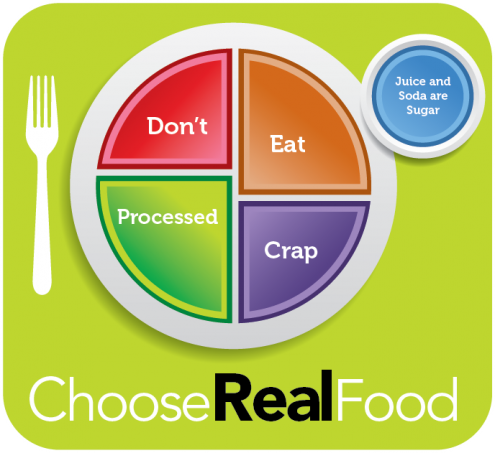
via ediblearia.com
The greatest compliment I can pay the philosophy of the Weston A. Price Foundation is that I did not need to shift my entire lifestyle all at once. Instead, I gradually incorporated what felt natural, made sense, and most importantly, what my family was ready for.
And the Wise Traditions do make sense: natural butter is superior to artificial margarine, cows that eat grass are happier than cows that eat grain and fermented foods have been a critical digestive aid that accompanied nearly every meal for most of human history. These are instincts I always harbored and felt distinct relief to have reaffirmed.
At each stage of my family’s dietary evolution, we have been sincere in our desire to find something that works for us, makes us feel good, and resonates with the knowledge we gain as we learn new things and stay informed.
We have continued searching, not because we were sure there was something better, but because we knew we were unfulfilled. With the WAPF diet, that desire is still sincere, but for the first time the feeling of searching for fulfillment is gone.
Whether or not you follow the dietary guidelines of the Weston A. Price Foundation, expanding consumption of nutrient dense foods and limiting refined/processed foods is the single most important step you can take to assure better health. As we say here at Kombucha Kamp, Trust Your Gut!
********
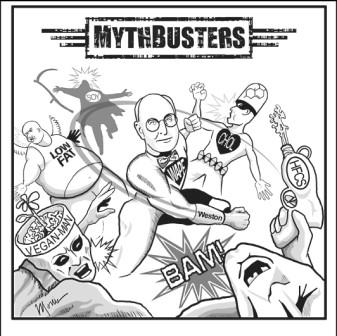 Weston A. Price in one sentence?
Weston A. Price in one sentence?
“Dr. Price’s research demonstrated that humans achieve perfect physical form and perfect health generation after generation only when they consume nutrient-dense whole foods and the vital fat-soluble activators found exclusively in animal fats.”
********
Read Dr. Price’s complete book (available free online), Nutrition and Physical Degeneration: A Comparison of Primitive and Modern Diets and Their Effects. Included are all the pictures he took of different native peoples documenting his findings.
********
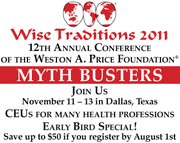 Kombucha Kamp is very proud to announce that we will be attending the 12th Annual Wise Traditions Conference of the Weston A. Price Foundation this November in Dallas, Texas.
Kombucha Kamp is very proud to announce that we will be attending the 12th Annual Wise Traditions Conference of the Weston A. Price Foundation this November in Dallas, Texas.
We are looking forward to meeting as many real food peeps as we can, learning everything we can cram in our little brains in 4 days, and eating awesome food!
Plenty of material from the conference will be featured on the blog!


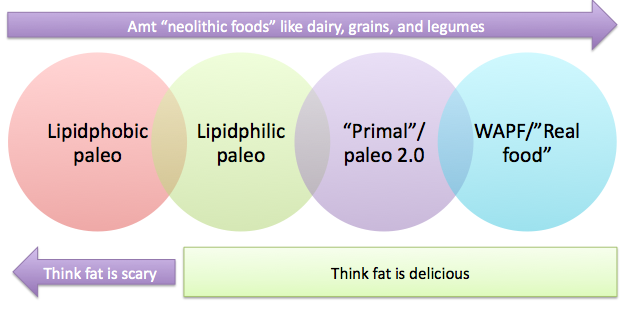
Jodi
September 30, 2013 at 7:58 amWe live a Paleo lifestyle. The infographic above is fairly misleading. I haven’t ever eaten more grass-fed, responsibly sourced fat in my life than I eat on a Paleo diet. Most Paleo folks ingest a TON of fat. We just avoid dairy and all grains (which works best for my family as we are celiacs and also horribly lactose-intolerant), processed oils and artificial sugars. It’s a very close cousin to the WAPF diet, despite some recent controversy.
Lola Faulkner
May 5, 2012 at 8:57 amGreat article!
Savannah
April 30, 2012 at 2:06 pmHave you tried making a “Double-Double” at home? Probably even better than anything they could mass produce, even with all of the healthful changes you mentioned.
Heidi Cooling via Facebook
April 30, 2012 at 11:28 amBecause we keep getting mixed messages from people whom we assume have some sort of “authority” over us. Unfortunately, many of them are making money off the misinformation! /:(